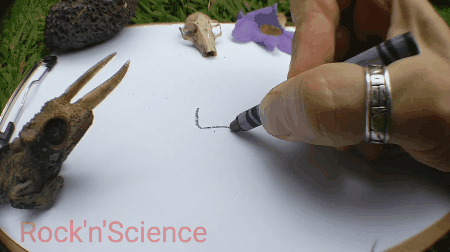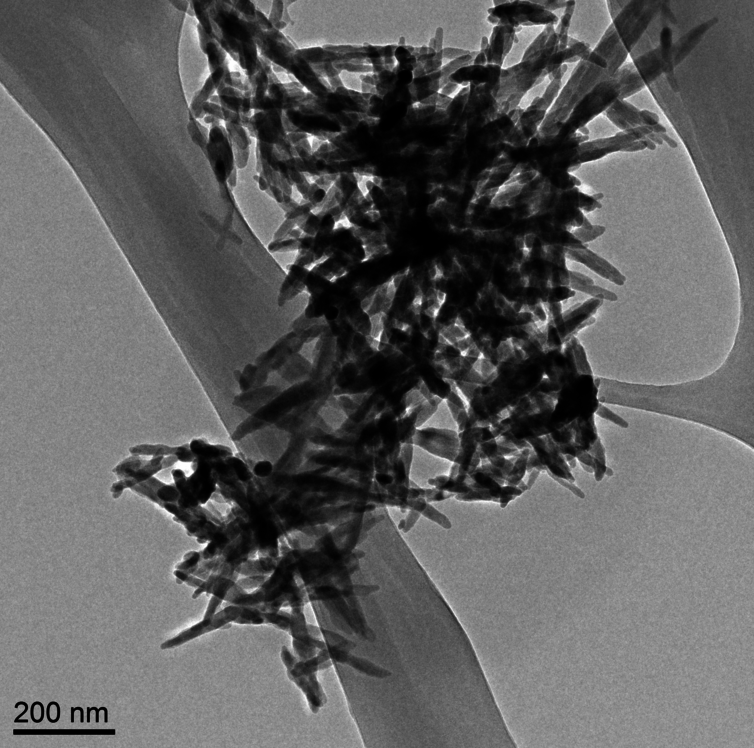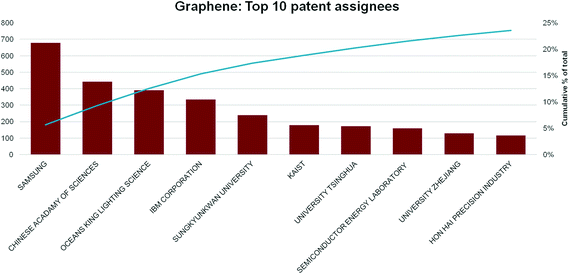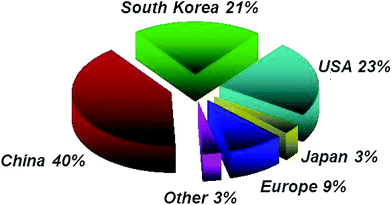Since last Saturday’s (April 22, 2017) US March for Science, I’ve stumbled across three interesting perspectives on the ‘movement’. As I noted in my April 14, 2017 posting, the ‘march’ has reached out beyond US borders to become international in scope. (On the day, at least 18 marches were held in Canada alone.)
Canada
John Dupuis wrote about his experience as a featured speaker at the Toronto (Ontario) march in an April 24, 2017 posting on his Confessions of a Science Librarian blog (Note: Links have been removed),
My fellow presenters were Master of Ceremonies Rupinder Brar and speakers Dawn Martin-Hill, Josh Matlow, Tanya Harrison, Chelsea Rochman, Aadita Chaudhury, Eden Hennessey and Cody Looking Horse.
Here’s what I had to say:
Hi, my name is John and I’m a librarian. My librarian superpower is making lists, checking them twice and seeing who’s been naughty and who’s been nice. The nice ones are all of you out here marching for science. And the naughty ones are the ones out there that are attacking science and the environment.
Now I’ve been in the list-making business for quite a few years, making an awful lot of lists of how governments have attacked or ignored science. I did a lot of work making lists about the Harper government and their war on science. The nicest thing I’ve ever seen written about my strange little obsession was in The Guardian.
Here’s what they said, in an article titled, How science helped to swing the Canadian election.
“Things got so bad that scientists and their supporters took to the streets. They demonstrated in Ottawa. They formed an organization, Evidence for Democracy, to bring push back on political interference in science. Awareness-raising forums were held at campuses throughout Canada. And the onslaught on science was painstakingly documented, which tends to happen when you go after librarians.”
Yeah, watch out. Don’t go after libraries and librarians. The Harper govt learned its lesson. And we learned a lesson too. And that lesson was that keeping track of things, that painstakingly documenting all the apparently disconnected little bits and pieces of policies here, regulations changed there and a budget snipped somewhere else, it all adds up.
What before had seemed random and disconnected is suddenly a coherent story. All the dots are connected and everybody can see what’s happened. By telling the whole story, by laying it all out there for everyone to see, it’s suddenly easier for all of us to point to the list and to hold the government of the day accountable. That’s the lesson learned from making lists.
…
But back in 2013 what I saw the government doing wasn’t the run of the mill anti-science that we’d seen before. Prime Minister Harper’s long standing stated desire to make Canada a global energy superpower revealed the underlying motivation but it was the endless litany of program cuts, census cancellation, science library closures, regulatory changes and muzzling of government scientists that made up the action plan. But was it really a concerted action plan or was it a disconnected series of small changes that were really no big deal or just a little different from normal?
That’s where making lists comes in handy. If you’re keeping track, then, yeah, you see the plan. You see the mission, you see the goals, you see the strategy, you see the tactics. You see that the government was trying to be sneaky and stealthy and incremental and “normal” but that there was a revolution in the making. An anti-science revolution.
Fast forward to now, April 2017, and what do we see? The same game plan repeated, the same anti-science revolution under way [in the US]. Only this time not so stealthy. Instead of a steady drip, it’s a fire hose. Message control at the National Parks Service, climate change denial, slashing budgets and shutting down programs at the EPA and other vital agencies. Incompetent agency directors that don’t understand the mission of their agencies or who even want to destroy them completely.
Once again, we are called to document, document, document. Tell the stories, mobilize science supporters and hold the governments accountable at the ballot box. Hey, like the Guardian said, if we did it in Canada, maybe that game plan can be repeated too.
I invited my three government reps here to the march today, Rob Oliphant, Josh Matlow and Eric Hoskins and I invited them to march with me so we could talk about how evidence should inform public policy. Josh, of course, is up here on the podium with me. As for Rob Oliphant from the Federal Liberals and Eric Hoskins from the Ontario Liberals, well, let’s just say they never answered my tweets.
Keep track, tell the story, hold all of them from every party accountable. The lesson we learned here in Canada was that science can be a decisive issue. Real facts can mobilise people to vote against alternative facts.
Thank you.
I’m not as sure as Dupuis that science was a decisive issue in our 2015 federal election; I’d say it was a factor. More importantly, I think the 2015 election showed Canadian scientists and those who feel science is important that it is possible to give it a voice and more prominence in the political discourse.
Rwanda
Eric Leeuwerck in an April 24, 2017 posting on one of the Agence Science-Press blogs describes his participation from Rwanda (I have provided a very rough translation after),
Un peu partout dans le monde, samedi 22 avril 2017, des milliers de personnes se sont mobilisées pour la « march for science », #sciencemarch, « une marche citoyenne pour les sciences, contre l’obscurantisme ». Et chez moi, au Rwanda ?
J’aurais bien voulu y aller moi à une « march for science », j’aurais bien voulu me joindre aux autres voix, me réconforter dans un esprit de franche camaraderie, à marcher comme un seul homme dans les rues, à dire que oui, nous sommes là ! La science vaincra, « No science, no futur ! » En Arctique, en Antarctique, en Amérique latine, en Asie, en Europe, sur la terre, sous l’eau…. Partout, des centaines de milliers de personnes ont marché ensemble. L’Afrique s’est mobilisée aussi, il y a eu des “march for science” au Kenya, Nigeria, Ouganda…
Et au Rwanda ? Eh bien, rien… Pourquoi suivre la masse, hein ? Pourquoi est-ce que je ne me suis pas bougé le cul pour faire une « march for science » au Rwanda ? Euh… et bien… Je vous avoue que je me vois mal organiser une manif au Rwanda en fait… Une collègue m’a même suggéré l’idée mais voilà, j’ai laissé tomber au moment même où l’idée m’a traversé l’esprit… Cependant, j’avais quand même cette envie d’exprimer ma sympathie et mon appartenance à ce mouvement mondial, à titre personnel, sans vouloir parler pour les autres, avec un GIF tout simple.

” March for science ” Rwanda
Je dois dire que je me sens bien souvent seul ici… Les cours de biologie de beaucoup d’écoles sont créationnistes, même au KICS (pour Kigali International Community School), une école internationale américaine (je tiens ça d’amis qui ont eu leurs enfants dans cette école). Sur son site, cette école de grande renommée ici ne cache pas ses penchants chrétiens : “KICS is a fully accredited member of the Association of Christian Schools International (ACSI) (…)” et, de plus, est reconnue par le ministère de l’éducation rwandais : “(KICS) is endorsed by the Rwandan Ministry of Education as a sound educational institution“. Et puis, il y a cette phrase sur leur page d’accueil : « Join the KICS family and impact the world for christ ».
Je réalise régulièrement des formations en pédagogie des sciences pour des profs locaux du primaire et du secondaire. Lors de ma formation sur la théorie de l’Evolution, qui a eu pas mal de succès, les enseignants de biologie m’ont confié que c’était la première fois, avec moi, qu’ils avaient eu de vrais cours sur la théorie de l’Evolution… (Je passe les débats sur l’athéisme, sur la « création » qui n’est pas un fait, sur ce qu’est un fait, qu’il ne faut pas faire « acte de foi » pour faire de la science et que donc on ne peut pas « croire » en la science, mais la comprendre…). Un thème délicat à aborder a été celui de la « construction des identités meurtrières » pour reprendre le titre du livre d’Amin Maalouf, au Rwanda comment est-ce qu’une pseudoscience, subjective, orientée politiquement et religieusement a pu mener au racisme et au génocide. On m’avait aussi formellement interdit d’en parler à l’époque, ma directrice de l’époque disait « ne te mêle pas de ça, ce n’est pas notre histoire », mais voilà, maintenant, ce thème est devenu un thème incontournable, même à l’Ecole Belge de Kigali !
Une autre formation sur l’éducation sexuelle a été très bien reçue aussi ! J’ai mis en place cette formation, aussi contre l’avis de ma directrice de l’époque (une autre) : des thèmes comme le planning familial, la contraception, l’homosexualité, gérer un débat houleux, les hormones… ont été abordées ! Première fois aussi, m’ont confié les enseignants, qu’ils ont reçu une formation objective sur ces sujets tabous.
Chaque année, je réunis un peu d’argent avec l’aide de l’École Belge de Kigali pour faire ces formations (même si mes directions ne sont pas toujours d’accord avec les thèmes ), je suis totalement indépendant et à part l’École Belge de Kigali, aucune autre institution dont j’ai sollicité le soutien n’a voulu me répondre. Mais je continue, ça relève parfois du militantisme, je l’avoue.
C’est comme mon blog, un des seuls blogs francophones de sciences en Afrique (en fait, je n’en ai jamais trouvé aucun en cherchant sur le net) dans un pays à la connexion Internet catastrophique, je me demande parfois pourquoi je continue… Je perds tellement de temps à attendre que mes pages chargent, à me reconnecter je ne sais pas combien de fois toutes les 5 minutes … En particulier lors de la saison des pluies ! Heureusement que je peux compter sur le soutien inconditionnel de mes communautés de blogueurs : le café des sciences , les Mondoblogueurs de RFI , l’Agence Science-Presse. Sans eux, j’aurais arrêté depuis longtemps ! Six ans de blogging scientifique quand même…
Alors, ce n’est pas que virtuel, vous savez ! Chaque jour, quand je vais au boulot pour donner mes cours de bio et chimie, quand j’organise mes formations, quand j’arrive à me connecter à mon blog, je « marche pour la science ».
Yeah. (De la route, de la science et du rock’n’roll : Rock’n’Science !)
(Un commentaire de soutien ça fait toujours plaisir !)
As I noted, this will be a very rough translation and anything in square brackets [] means that I’m even less sure about the translation in that bit,
Pretty much around the world, thousands will march for science against anti-knowledge/anti-science.
I would have liked to join in and to march with other kindred spirits as one in the streets. We are here! Science will triumph! No science .No future. In the Arctic, in the Antarctic, in Latin America, in Asia, in Europe, on land, on water … Everywhere hundreds of thousands of people are marching together. Africa, too, has mobilized with marches in Kenya, Nigeria, Uganda ..
And in Rwanda? Well, no, nothing. Why follow everyone else? Why didn’t I get my butt in gear and organize a march? [I’m not good at organizing these kinds of things] A colleague even suggested I arrange something . I had an impulse to do it and then it left. Still, I want to express my solidarity with the March for Science without attempting to talk for or represent anyone other than myself. So, here’s a simple gif,
…
I have to say I often feel myself to be alone here. The biology courses taught in many of the schools here are creationist biology even at the KICS (Kigali International Community School), an international American school (I have friends whose children attend the school). On the school’s site there’s a sign that does nothing to hide its mission: “KICS is a fully accredited member of the Association of Christian Schools International (ACSI) (…)” and, further, it is recognized as such by the Rwandan Ministry of Education : “(KICS) is endorsed by the Rwandan Ministry of Education as a sound educational institution”. Finally, there’s this on their welcome page : « Join the KICS family and impact the world for christ ».
I regularly give science education prgorammes for local primary and secondary teachers. With regard to my teaching on the theory of evolution some have confided that this is the first time they’ve truly been exposed to a theory of evolution. (I avoid the debates about atheism and the creation story. Science is not about faith it’s about understanding …). One theme that must be skirted with some delicacy in Rwanda is the notion of constructing a murderous/violent identity to borrow from Amin Maalouf’s book title, ‘Les Identités meurtrières’; in English: In the Name of Identity: Violence and the Need to Belong) as it has elements of a pseudoscience, subjectivity, political and religious connotations and has been used to justify racism and genocide. [Not sure here if he’s saying that the theory of evolution has been appropriated and juxtaposed with notions of violence and identify leading to racism and genocide. For anyone not familiar with the Rwandan genocide of 1994, see this Wikipedia entry.] Ihave been formally forbidden to discuss this period and my director said “Don’t meddle in this. It’s not our history.” But this theme/history has become essential/unavoidable even at the l’Ecole Belge de Kigali (Belgian School of Kigali).
A programme on sex education was well received and that subject too was forbidden to me (by a different director). I included topics such as family planning, contraception, homosexuality, hormones and inspired a spirited debate. Many times my students have confided that they received good factual information on these taboo topics.
Each year with help from the Belgian School at Kigali, I raise money for these programmes (even if my directors don’t approve of the topics). I’m totally independent and other than the Belgian School at Kigali no other institution that I’ve appraoched has responded. But I continue as I hope that it can help lower milittancy.
My blog is one of the few French language science blogs in Africa (I rarely find any other such blogs when I search). In a country where the internet connection is catastrophically poor, I ask myself why I go on. I lose a lot of time waiting for pages to load or to re-establish a connection, especially in the rainy season. Happily I can depend on the communities of bloggers such as: café des sciences , les Mondoblogueurs de RFI , l’Agence Science-Presse. Without them I would have stopped long ago. It has been six years of blogging science …
It is virtual, you know. Each day when I deliver my courses in biology and chemistry, when I organize my programmes, when I post on my blog, ‘I march for science’.
…
Comments are gladly accepted. [http://www.sciencepresse.qc.ca/blogue/2017/04/24/march-science-rwanda]
All mistakes are mine.
US
My last bit is from an April 24, 2017 article by Jeremy Samuel Faust for Slate.com, (Note: Links have been removed),
Hundreds of thousands of self-professed science supporters turned out to over 600 iterations of the March for Science around the world this weekend. Thanks to the app Periscope, I attended half a dozen of them from the comfort of my apartment, thereby assiduously minimizing my carbon footprint.
Mainly, these marches appeared to be a pleasant excuse for liberals to write some really bad (and, OK, some truly superb) puns, and put them on cardboard signs. There were also some nicely stated slogans that roused support for important concepts such as reason and data and many that decried the defunding of scientific research and ignorance-driven policy.
But here’s the problem: Little of what I observed dissuades me from my baseline belief that, even among the sanctimonious elite who want to own science (and pwn [sic] anyone who questions it), most people have no idea how science actually works. The scientific method itself is already under constant attack from within the scientific community itself and is ceaselessly undermined by its so-called supporters, including during marches like those on Saturday. [April 22, 2017] In the long run, such demonstrations will do little to resolve the myriad problems science faces and instead could continue to undermine our efforts to use science accurately and productively.
…
Indeed much of the sentiment of the March for Science seemed to fall firmly in the camp of people espousing a gee-whiz attitude in which science is just great and beyond reproach. They feel that way because, so often, the science they’re exposed to feels that way—it’s cherry-picked. Cherry-picking scientific findings that support an already cherished and firmly held belief (while often ignoring equally if not more compelling data that contradicts it) is epidemic—in scientific journals and in the media.
Let’s face it: People like science when it supports their views. I see this every day. When patients ask me for antibiotics to treat their common colds, I tell them that decades of science and research, let alone a basic understanding of microbiology, shows that antibiotics don’t work for cold viruses. Trust me, people don’t care. They have gotten antibiotics for their colds in the past, and, lo, they got better. (The human immune system, while a bit slower and clunkier than we’d like it to be, never seems to get the credit it deserves in these little anecdotal stories.) Who needs science when you have something mightier—personal experience?
Another example is the vocal wing of environmentalists who got up one day and decided that genetically modified organisms were bad for you. They had not one shred of evidence for this, but it just kind of felt true. As a result, responsible scientists will be fighting against these zealots for years to come. While the leaders of March for Science events are on the right side of this issue, many of its supporters are not. I’m looking at you, Bernie Sanders; the intellectual rigor behind your stance requiring GMO labelling reflects a level of scientific understanding that would likely lead for calls for self-defenestration from your own supporters if it were applied to, say, something like climate change.
But it does not stop there. Perhaps as irritating as people who know nothing about science are those who know just a little bit—just enough to think they have any idea as to what is going on. Take for example the clever cheer (and unparalleled public declaration of nerdiness):
What do we want?
Science!
When do we want it?
After peer review!
Of course, the quality of most peer-review research is somewhere between bad and unfair to the pixels that gave their lives to display it. Just this past week, a study published by the world’s most prestigious stroke research journal (Stroke), made headlines and achieved media virality by claiming a correlation between increased diet soda consumption and strokes and dementia. Oh, by the way, the authors didn’t control for body mass index [*], even though, unsurprisingly, people who have the highest BMIs had the most strokes. An earlier study that no one seems to remember showed a correlation of around the same magnitude between obesity and strokes alone. But, who cares, right? Ban diet sodas now! Science says they’re linked to strokes and dementia! By the way, Science used to say that diet sodas cause cancer. But Science was, perish the thought, wrong.
If you can get past the writer’s great disdain for just about everyone, he makes very good points.
To add some clarity with regard to “controlling for body mass index,” there’s a concept in research known as a confounding variable. In this case, people who have a higher body mass index (or are more obese) will tend to have more strokes according to previous research which qualifies as a confounding variable when studying the effect of diet soda on strokes. To control for obesity means you set up the research project in such a way you can compare (oranges to oranges) the stroke rates of obese people who drink x amount of diet soda with obese people who do not drink x amount of diet soda and compare stroke rates of standard weight people who drink x amount of diet soda with other standard weight people who do not drink x amount of diet soda. There are other aspects of the research that would also have be considered but to control for body mass index that’s the way I’d set it up.
One point that Faust makes that isn’t made often enough and certainly not within the context of the ‘evidence-based policy movement’ and ‘marches for science’ is the great upheaval taking place within the scientific endeavour (Note: Links have been removed),
…
… . There are a dozen other statistical games that researchers can play to get statistical significance. Such ruses do not rise to anything approaching clinical relevance. Nevertheless, fun truthy ones like the diet soda study grab headlines and often end up changing human behaviors.
The reason this problem, what one of my friends delightfully calls statistical chicanery, is so rampant is twofold. First, academics need to “publish or perish.” If researchers don’t publish in peer-reviewed journals, their careers will be short and undistinguished. Second, large pharmaceutical companies have learned how to game the science system so that their patented designer molecules can earn them billions of dollars, often treating made-up diseases (I won’t risk public opprobrium naming those) as well as other that we, the medical establishment, literally helped create (opioid-induced constipation being a recent flagrancy).
Of course, the journals themselves have suffered because their contributors know the game. There are now dozens of stories of phony research passing muster in peer-review journals, despite being intentionally badly written. These somewhat cynical, though hilarious, exposés have largely focused on outing predatory journals that charge authors money in exchange for publication (assuming the article is “accepted” by the rigorous peer-review process; the word rigorous, by the way, now means “the credit card payment went through and your email address didn’t bounce”). But even prestigious journals have been bamboozled. The Lancet famously published fabrications linking vaccines and autism in 1998. and it took it 12 years to retract the studies. Meanwhile, the United States Congress took only three years for its own inquiry to debunk any link. You know it’s bad when the U.S. Congress is running circles around the editorial board of one of the world’s most illustrious medical journals. Over the last couple of decades, multiple attempts to improve the quality of peer-review adjudication have disappointingly and largely failed to improve the situation.
While the scientific research community is in desperate need of an overhaul, the mainstream media (and social media influencers) could in the meantime play a tremendously helpful role in alleviating the situation. Rather than indiscriminately repeating the results of the latest headline-grabbing scientific journal article and quoting the authors who wrote the paper, journalists should also reach out to skeptics and use their comments not just to provide (false) balance in their articles but to assess whether the finding really warrants an entire article of coverage in the first place. Headlines should be vetted not for impact and virality but for honesty. As a reader, be wary of any headline that includes the phrase “Science says,” as well as anything that states that a particular study “proves” that a particular exposure “causes” a particular disease. Smoking causes cancer, heart disease, and emphysema, and that’s about as close to a causal statement as actual scientists will make, when it comes to health. Most of what you read and hear about turns out to be mere associations, and mostly fairly weak ones, at that.
Faust refers mostly to medical research but many of his comments are applicable to other science research as well. By the way, Faust has written an excellent description of p-values for which, if for no other reason, you should read his piece in its entirety.
One last comment about Faust’s piece, he exhorts journalists to take more care in their writing but fails to recognize the pressures on journalists and those who participate in social media. Briefly, journalists are under pressure to produce. Many of the journalists who write about science don’t know much about it and even the ones who have a science background may be quite ignorant about the particular piece of science they are covering, i.e., a physicist might have some problems covering medical research and vice versa. Also, mainstream media are in trouble as they struggle to find revenue models.
As for those of us who blog and others in the social media environment; we are a mixed bag in much the same way that mainstream media is. If you get your science from gossip rags such as the National Enquirer, it’s not likely to be as reliable as what you’d expect from The Guardian or the The New York Times. Still, those prestigious publications have gotten quite wrong on occasion.
In the end, readers (scientists, journalists, bloggers, etc.) need to be skeptical. It’s also helpful to be humble or at least willing to admit you’ve made a mistake (confession: I have my share on this blog, which are noted when I’ve found or when they’ve been pointed out to me).
Final comments
Hopefully, this has given you a taste for the wide ranges of experiences and perspectives on the April 22, 2017 March for Science.








![[similar]](http://www.rsc.org/images/entities/char_223c.gif) 50%) of total patent filings: the other half comprises contributions from small and medium-sized enterprises (SMEs) and multinationals.
50%) of total patent filings: the other half comprises contributions from small and medium-sized enterprises (SMEs) and multinationals.
![Fig. 122 The STRs [science and technology roadmaps] follow a hierarchical structure where the strategic level in a) is connected to the more detailed roadmap shown in b). These general roadmaps are the condensed form of the topical roadmaps presented in the previous sections, and give technological targets for key applications to become commercially competitive and the forecasts for when the targets are predicted to be met. Courtesy: Researchers and the Royal Society's journal, Nanoscale](http://www.frogheart.ca/wp-content/uploads/2015/02/Euroepan-Graphene-Roadmap-203x300.gif)